This post is the eighth in a series of oil painting project tutorials derived from coursework completed at Academie Noord in Brasschaat, Belgium. Projects were designed by Schilderkunst teacher Marilou van Lierop. The sample artwork is my own.
It’s time to conjure up memories from your youth. Not the typical playful scenes that we all have etched in our minds, nor the traumatic ones we’d all rather forget. No. This time, focus on sound. Try to re-create the feelings and emotions connected to the music that was important to you, once upon a time. This is what we were asked to do in this project.
The challenge for me was not finding the songs, but connecting them with personal imagery that could translate into a figurative painting. I started out searching through pictures of boy bands whose songs I remembered singing with my pre-adolescent girlfriends. Thankfully, Marilou van Lierop encouraged me to dig deeper.
Audio Player
When I was a little girl, I loved ballet. I took lessons, and danced around the house all. the. time. I read and re-read the Angelina Ballerina books, imagining that those stories could be about myself (although, maybe, not as a mouse). When my father bought me and my mother tickets to the Nutcracker one year for Christmas, it was a dream come true. The Dance of the Sugar Plum Fairy is inextricably linked with my childhood because of this experience. It became the basis for this artwork.
Project: Create a Painting Based on a Musical Memory
Skills Exercised: Imprimatura, Wipeout Method of Underpainting, Painting Wet on Wet, Painting in Value Gradations, Impasto
Materials: Water-Mixable Oil Paints, Water, Water Mixable Linseed Oil, Paint Brushes, Canvas/Canvas Paper/primed wood panel
The Palette
In this class, we use water mixable oil paints and mediums. Not only are they better for the environment (water is used as a solvent), they’re also much better for our health in a crowded classroom (less toxic fumes).
My painter’s box includes the following Winsor & Newton Water Mixable Oil Colours, as suggested by my painting teacher. Other brands may work just as well, but I haven’t tried them myself. All additional colors are either mixed on the palette or created through glazing onto the painting.
- Yellow Ochre
- Cadmium Yellow Pale Hue
- Burnt Umber
- Burnt Sienna
- Permanent Alizarin Crimson
- Cadmium Red Hue
- Cerulean Blue
- French Ultramarine
- Viridian
- Titanium White
I also use a bottle of Winsor & Newton Artisan Water Mixable Linseed Oil
The Method
At this point of the course, we were left to build the painting on our own, following a process that worked best for each of us. I followed the method used in previous lessons. I also wanted to experiment more with selective focus, working up a chosen area of the canvas more fully, and purposefully leaving others in a primitive state. The prima ballerina in the foreground is brighter, more defined, and rendered using a range of shadows and highlights. The two in the background are instead duller in color and more flat. I used glazing to add a vibrant French Ultramarine in the background, as well as some Permanent Alizarin Crimson to the ballerinas’ flesh.

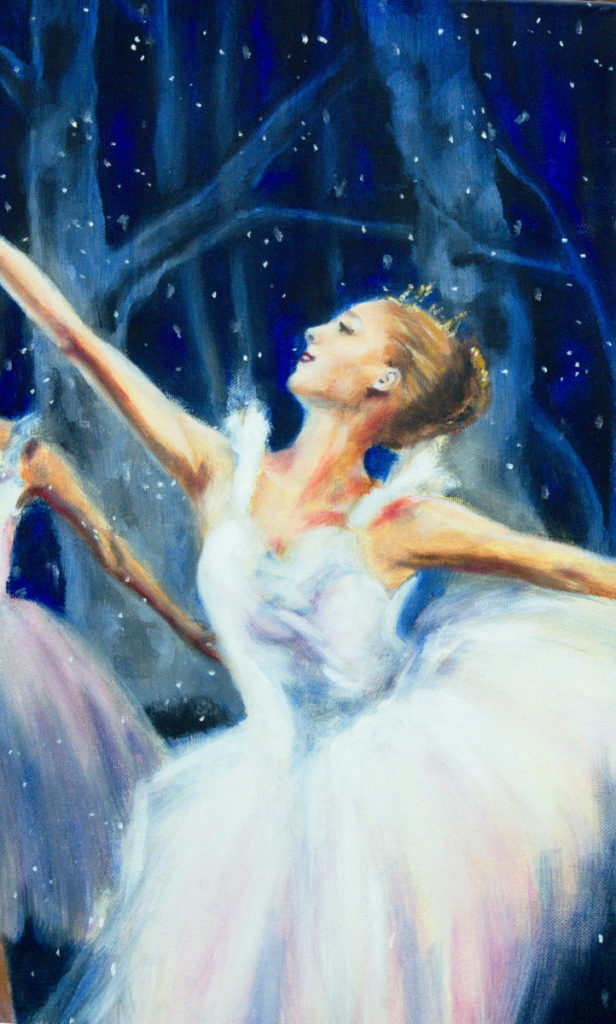
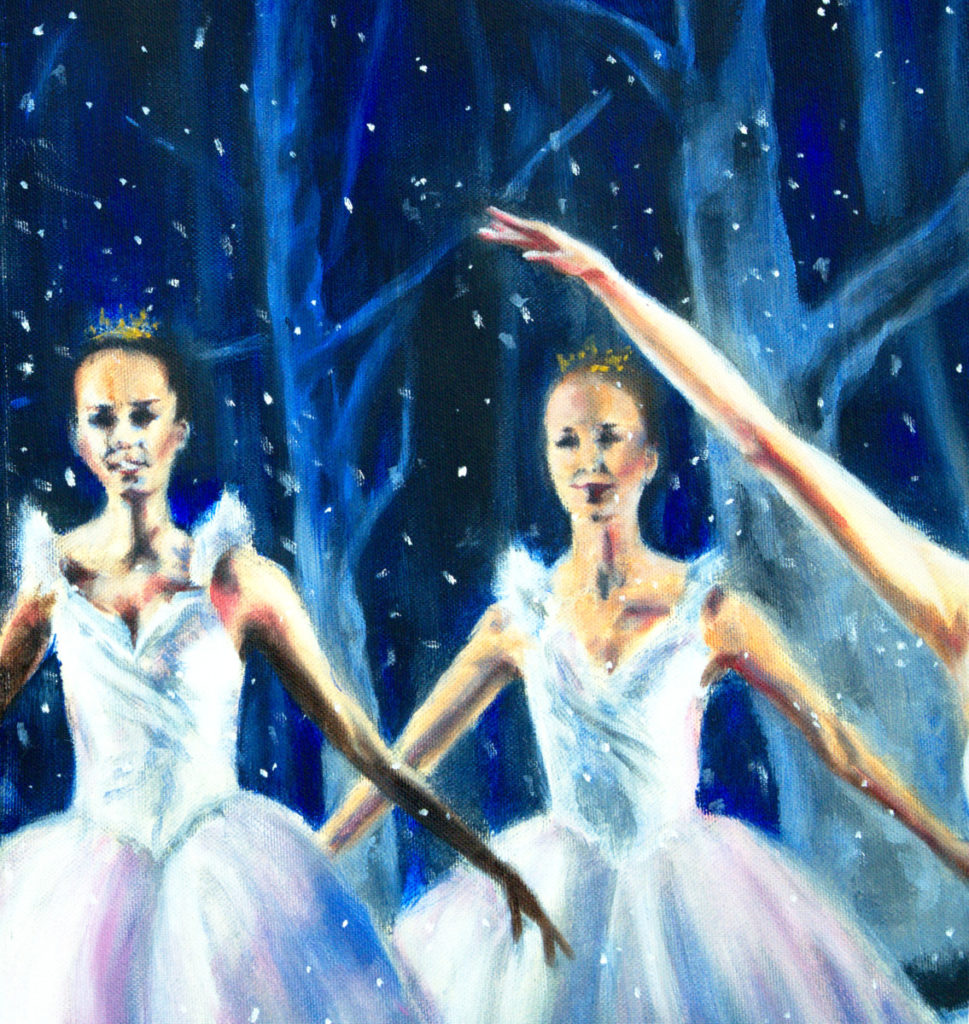
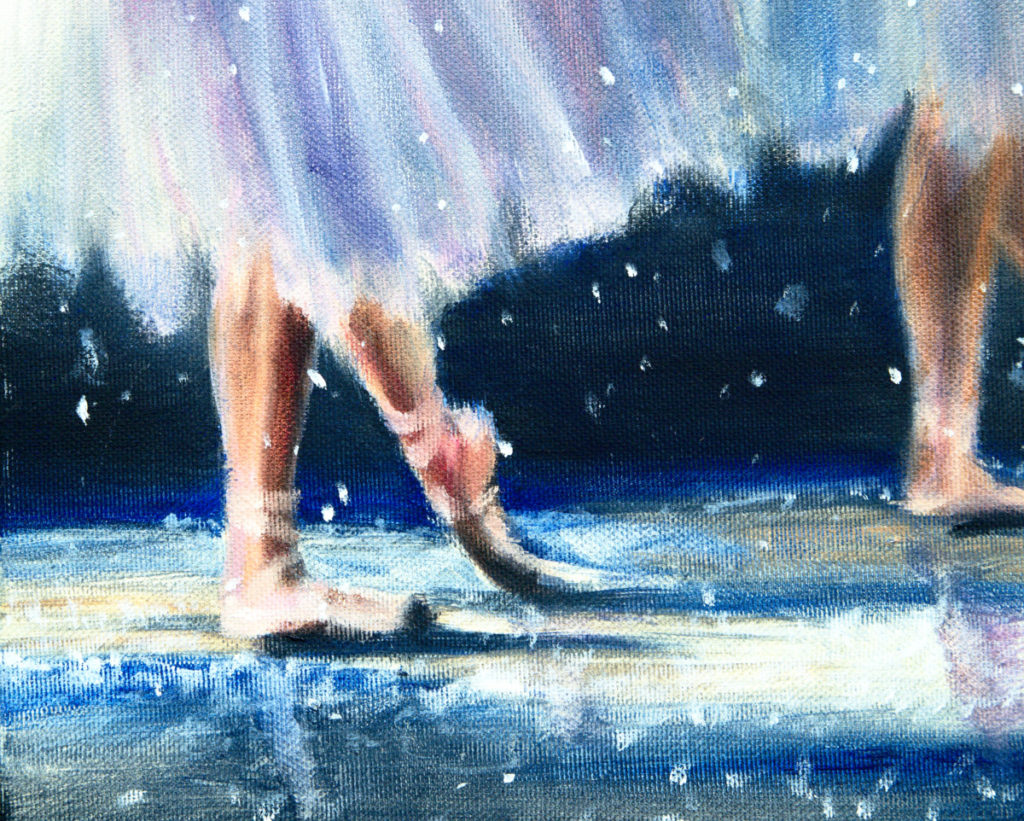
Notes
- The combination of growing confidence in paint handling and my teacher’s guidance on resisting “over painting” led me to work much faster. It was becoming ever more common for me to complete the class projects twice. See The Reader: Incorporating Music and Memory into Oil Painting





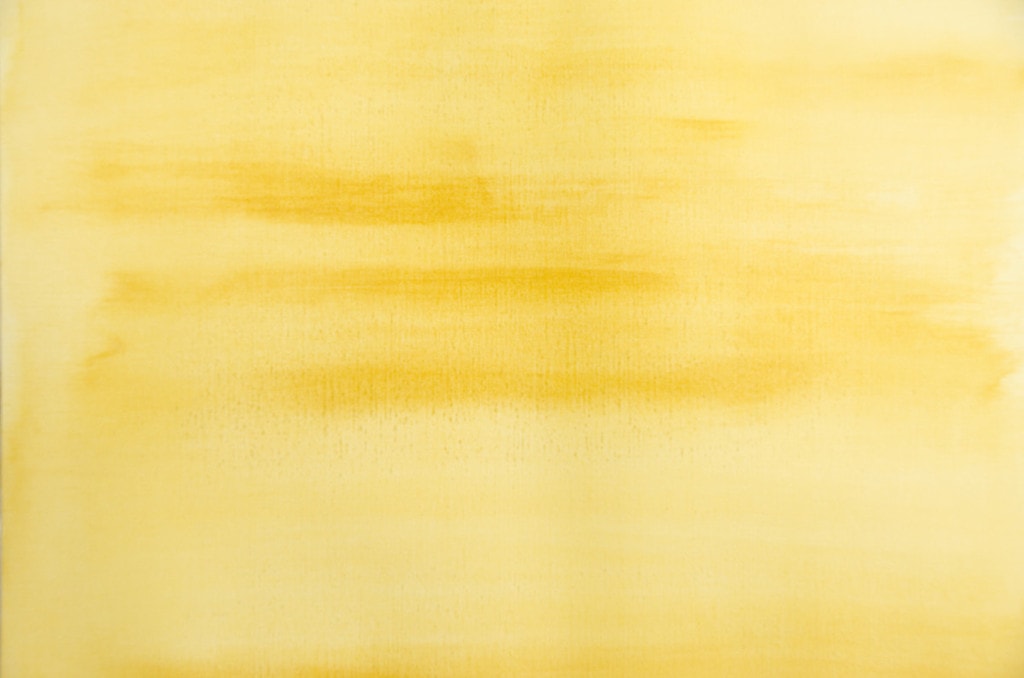
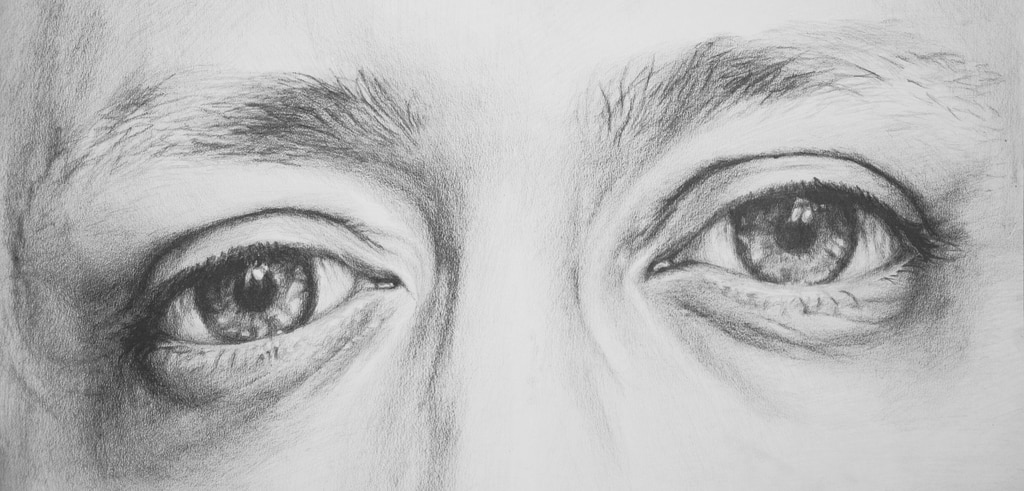
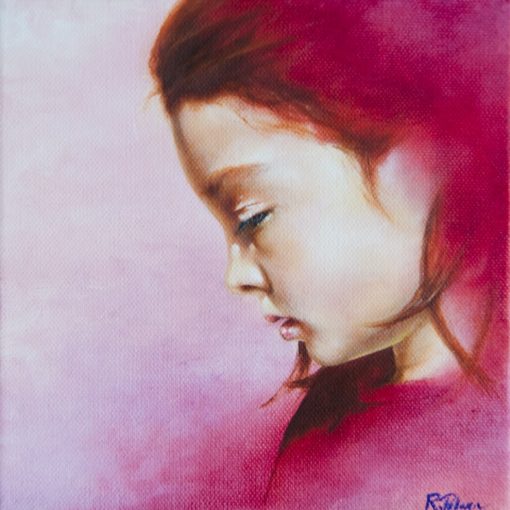
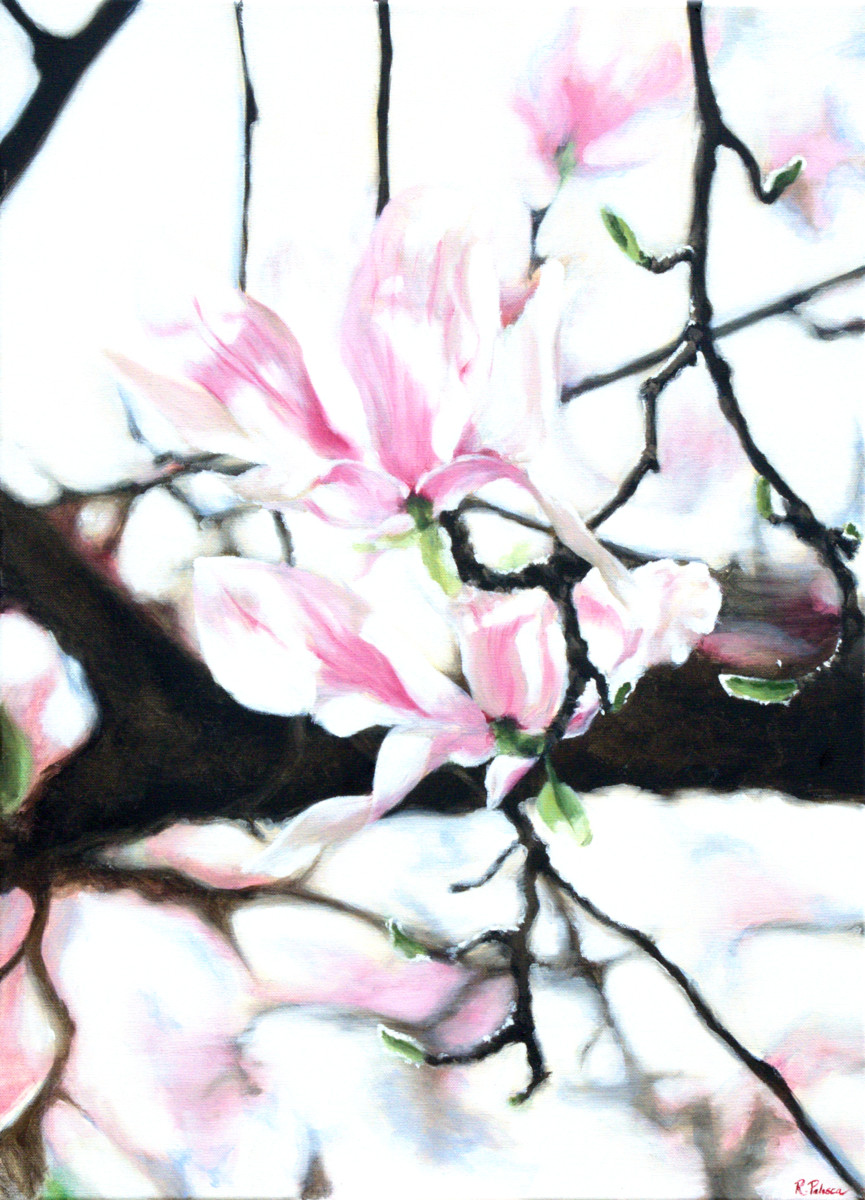
One thought on “The Nutcracker Suite: Incorporating Music and Memory into Oil Painting”